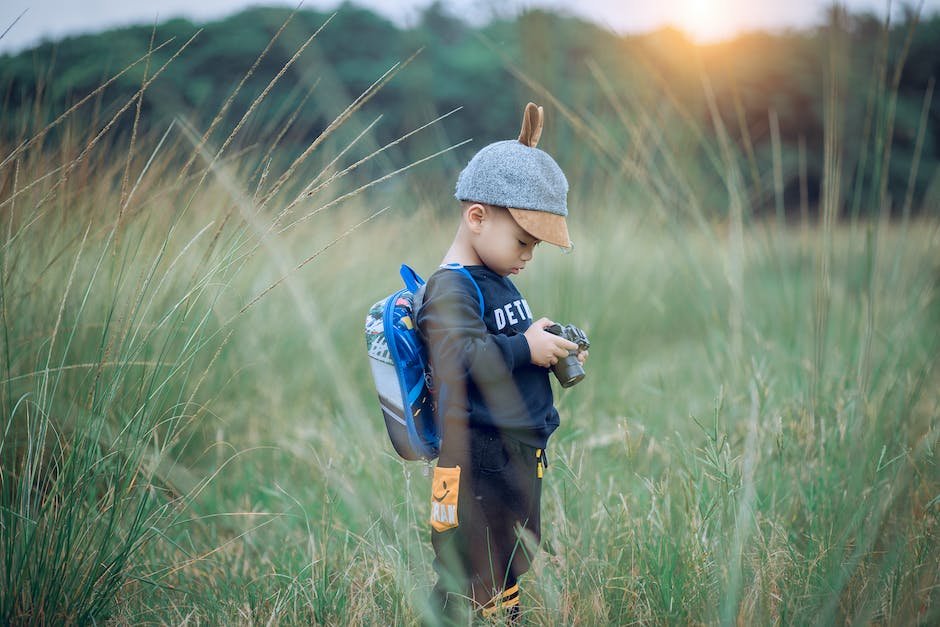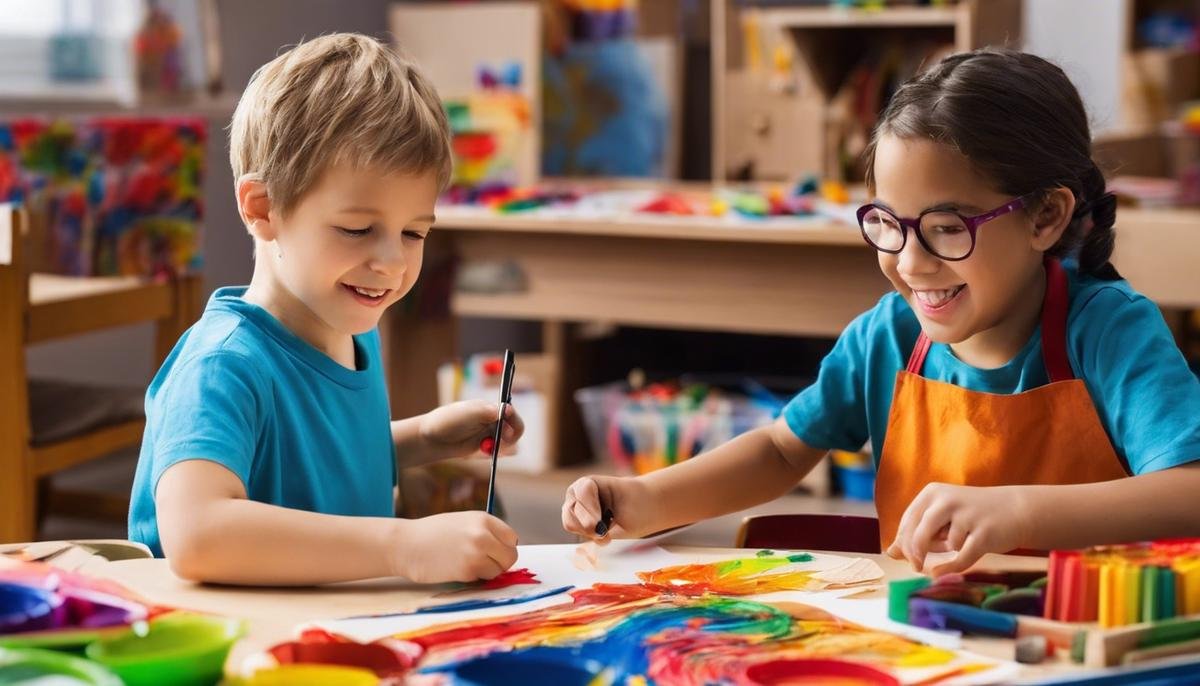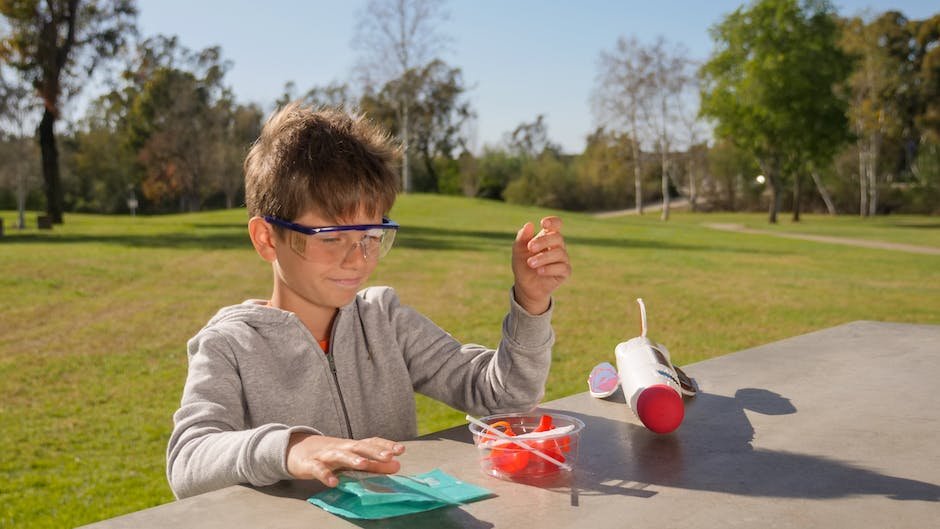
In the diverse landscape of creative expression, art stands tall as a universal language that transcends boundaries and barriers, fostering understanding and connection. This is particularly relevant in the domain of autism, where it has been instrumental in opening channels of communication, promoting self-expression, and contributing to overall developmental success. The coming years, particularly 2023, promise a bevy of autism art programs committed to harnessing this potential and facilitating positive growth among the autistic community. From exploring how art benefits children with autism to outlining the top autism art programs for 2023, and even compiling a selection of simple DIY art projects for autistic children to enjoy at home, this discussion aims to offer a comprehensive perspective on the intersection of art and autism.
Understanding Autism and Art
Unlocking Potential: The Power of Art in helping Children with Autism
Creating a wholesome family lifestyle involves understanding and nurturing each person’s unique abilities and interests in the home. It’s a beautiful journey, filled with surprises and rich learning experiences that inspire us to grow together. Among these enriching situations, nurturing a child with Autism Spectrum Disorder (ASD) stands as an enlightening path of discovery and growth. With increased awareness and novel therapies, we are finding promising ways to create an inclusive environment. One brilliant cornerstone in nurturing our unique stars is Art. So, let’s take a closer dive and explore how art can be a beneficial tool for children with autism.
Art is a powerful medium for self-expression, say experts in psychology. This becomes especially crucial for kids with autism, who often struggle with conventional communication. Art allows them to put their thoughts, feelings, and experiences into a tangible form, otherwise hard to express. This, in turn, can help families and therapists decode their child’s internal world, leading towards improved understanding and communication.
Artistic activities can help children with autism enhance their fine motor skills. Activities, like drawing or painting, require a certain level of precision and control. With time and practice, these activities can strengthen their hand-eye coordination, dexterity, and concentration. It’s incredible how those vibrant doodles can turn into a fun-filled practice exercise, contributing to their growth.
Beyond just self-expression and motor skills, art can play a pivotal role in sensory processing too. A sensory-rich environment is vital for children with autism to understand and process different stimuli. The diverse textures of art materials provide an excellent way for these children to explore and navigate different sensory experiences. The feel of clay, the smooth movement of a paintbrush, or the sound of crayons on paper can provide enriching sensory inputs.
Another aspect that’s not too highlighted yet equally essential, is the emotional well-being nurtured by art activities. Art can serve as a calming and therapeutic outlet for easing anxiety and stress. Prolonged focus on a relaxing task such as coloring or clay modeling can create a kind of “flow” state, reducing negative emotions and promoting feelings of calm and contentment.
Art also fosters social interaction, an area in which children with autism often face challenges. Art classes or workshops provide a great platform for these kids to interact with peers, build relationships, and work on social cues and cooperation. It’s a remarkable sight to witness when a shared love for art turns into a channel for strengthening social connections.
When we look at the transformative power of art, it becomes abundantly clear how it can serve as a beneficial tool for kids with autism. As friends, family, and community members, incorporating art into their daily routine can assist in unlocking their potential. It’s about celebrating each stroke of color, each molded clay figurine, every rip of the collage paper, and ultimately, every small triumph of our brave little artists. Because nurturing is not just about guiding; it’s about letting them steer their journey, having us there, appreciating and applauding at each milestone they conquer.

Program Analysis: The Top Autism Art Programs for 2023
Exploring Top Autism Art Programs for 2023: Transforming Lives One Canvas at a Time
Diving right into the heart of the topic, let’s explore the top autism art programs for 2023 playing a significant role in children’s lives. These unique programs are conceptualized to extend beyond the mainstream and emerge as a beacon of hope and empowerment for autistic children.
One of the top-rated programs in 2023 is the “Infinite Imaginations” program by Orange Art School. This innovative initiative focuses primarily on facilitating creativity in unlimited forms. No two minds are alike; hence, Infinite Imaginations provides an anthill of resources for kids to delve into their artistic urges and express themselves freely.
Next on the list is the “Color Me Bright” initiative by Spectrum Creatives. This program uses a fusion of digital and traditional art mediums and emphasizes embracing diversity. The inspiring blend of technologies encourages kids to venture into the unexplored, providing a unique artistic experience and fostering a sense of inclusion.
Coming up next is the “Masterpiece Makers” initiative by the United Artistry Hub. This program encourages autistic children to explore different art forms such as painting, cartooning, sculpture, and pottery. Its definitive strength lies in its mentorship approach, with facilitating artists nurturing individual talents, encouraging exploration, and at the same time embracing the joy of art creation.
Furthermore, “The Canvas for Change” program by the Russell Foundation offers an art platform that inculcates confidence in autistic children. Conceived on the idea that every child carries a unique talent, this program focuses on turning fears into strengths by exploring children’s intrinsic abilities and fueling self-confidence.
Finally, Kendra’s “Shine Bright Studio” isn’t just an art program but a movement. Believing that art is a universal language, the Studio caters to creating an artwork portfolio for each participating child. As they progress, these artworks serve as a testament to their growth and achievement, providing a tangible boost to their sense of self-worth.
In sum, the top autism art programs for 2023 carry a communal mission at heart— to unlock and nourish the artistic potential inherent in every child. Breathing life into the art forms created by these special kids, these programs inspire and encourage them to express, connect, and thrive. Remember, these children are not just learners at these studios. They are artists shaping their world, one stroke at a time.

Integrating Art at Home: DIY Art Projects for Autistic Children
Easy, Fun, and Purposeful At-Home Art Projects for Children with Autism
Autism in children often manifests itself in the way they interact with the world. Given the diverse range of personalities, interests, and abilities among autistic children, it is essential to tailor activities to fit their unique needs. Ensuring these activities are enjoyable and beneficial for them can be quite challenging, but not impossible. That’s where art comes in. Although the value of art as a coping tool has already been underlined, the challenge often lies in coming up with fun and functional art projects for kids with autism. So, let’s dive in!
- Clay Sculpting: Hands-on art projects are a favorite among children with autism. Molding and sculpting with Play-doh or clay can be especially advantageous as it taps into their tactile senses, offering a wonderful sensory experience. It also becomes a creative outlet for them to recreate their favorite objects or unleash their imagination.
- Drawing or Painting To Music: Matching art activities with music provides an enriching multi-sensory experience. Choose calming, instrumental music and encourage the children to paint their feelings or the rhythms they hear. Not only will this bring out the inherent creativity in them, but it will also offer a soothing experience.
- DIY Sensory Bottles: Sensory bottles are fascinating for most children, even more so for those with autism. The beauty of creating their sensory bottle lies in the fact that they can personalize it with any trinket, color, or materials that they love.
- Puzzle Piece Art: Puzzles can be rather engaging and also promote problem-solving abilities. Consider re-purposing old puzzles or creating your puzzle shapes. These pieces can be decorated with paint, glitter, or stickers, providing an exciting twist to the usual jigsaw puzzle activity.
- Themed Collage Art: Collages are great for all ages and functional for thematic learning. For instance, you could start with a ‘Nature’ theme, where they can paste pictures or real-life leaves, twigs, etc., on a sheet. It’s a creative way to teach them about various themes while putting their fine motor skills into play.
There are some great initiatives in place by dedicated organizations focusing on art for autistic children. For instance, the “Infinite Imaginations” program by Orange Art School provides a treasure trove of ideas for art projects. Similarly, the “Color Me Bright” initiative by Spectrum Creatives offers an array of activities that you can easily replicate at home. The United Artistry Hub’s “Masterpiece Makers” initiative, the “Canvas for Change” program by the Russell Foundation, and Kendra’s “Shine Bright Studio”, also provide excellent resources to introduce art to children with autism in a fun, enjoyable, and meaningful manner.
We are all artists in our unique ways, and this certainly holds true for children with autism. Remember, the goal here is not to make perfect art, but to make art that makes them happy. Create an environment of open-mindedness and acceptance where there’s no right or wrong. After all, every child, with or without autism, is a masterpiece in the making.

As we look forward to the rise of innovative art programs in 2023, geared towards offering unique artistic experiences for the autistic community, we must not forget the potential of integrating such practices at home. With the right resources, imagination and a dash of patience, parents have the power to turn their living spaces into dynamic art studios that foster their child’s unique skills and gifts. DIY art projects, hence, can amplify the beneficial impact of professional art programs, painting a holistic picture of artistic immersion. In summary, art, in all its myriad forms, holds the key to unlocking untapped potential in children with autism, inspiring them to express, explore and engage in ways they may not have thought possible.




